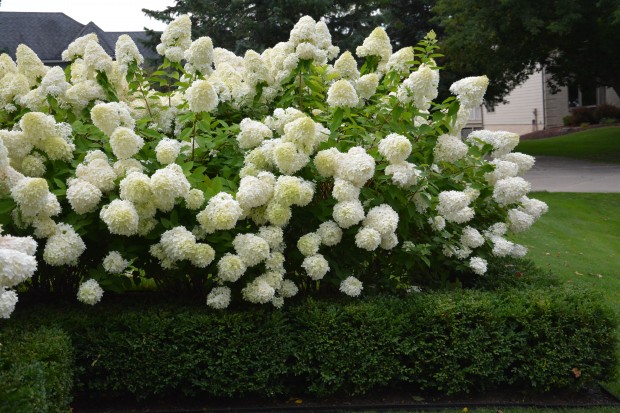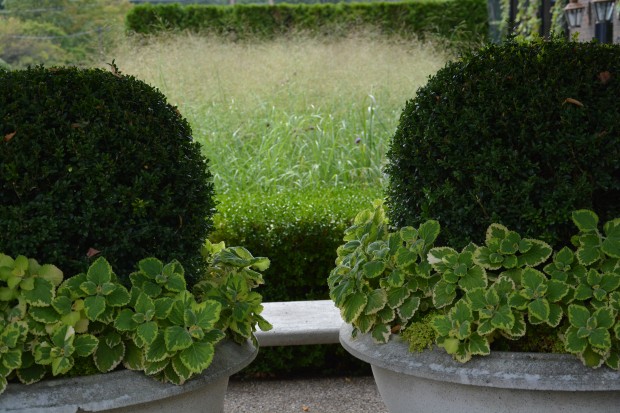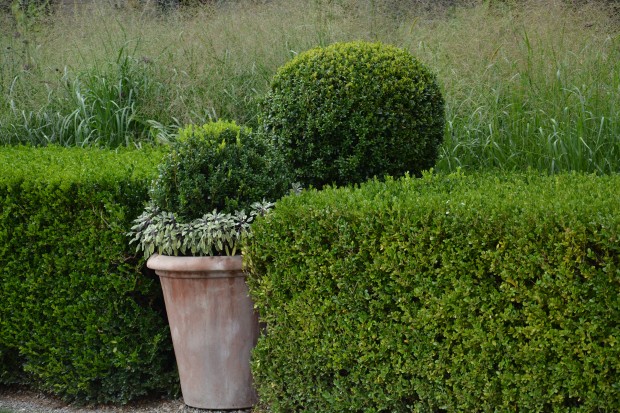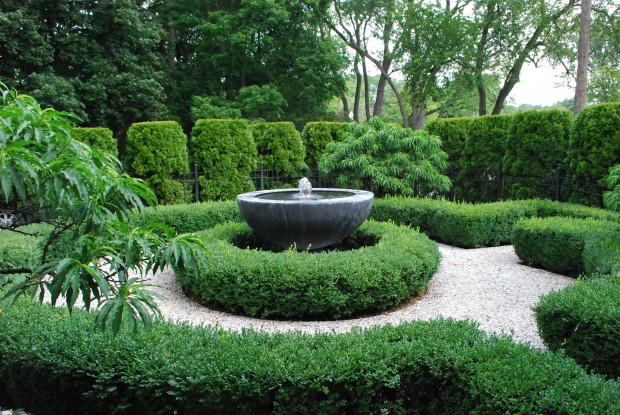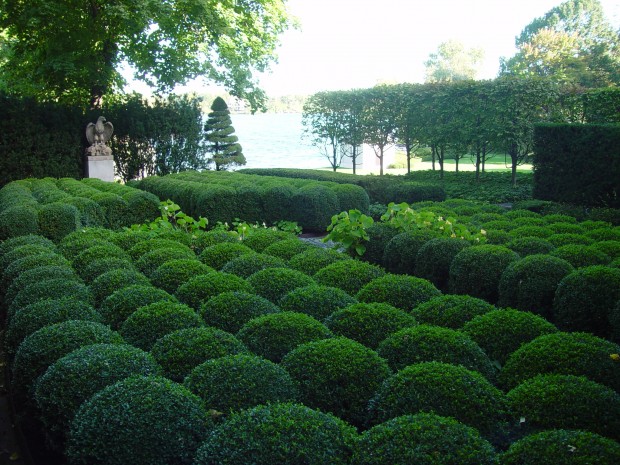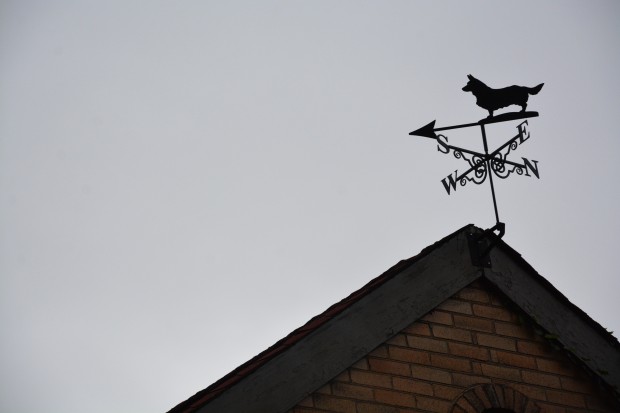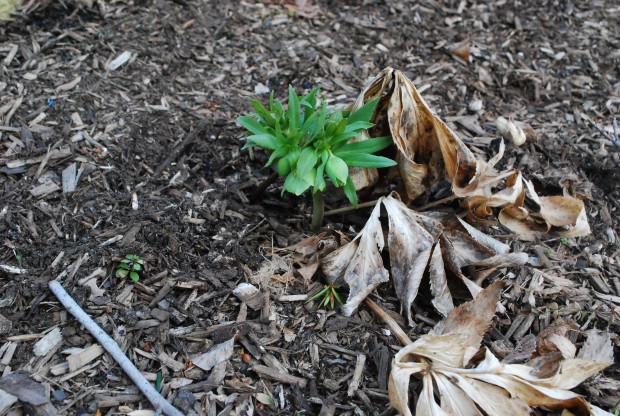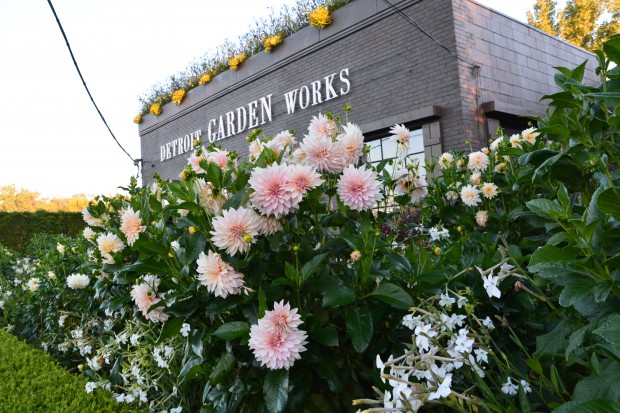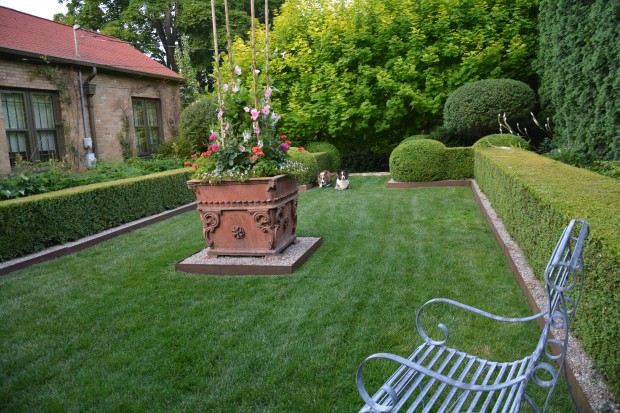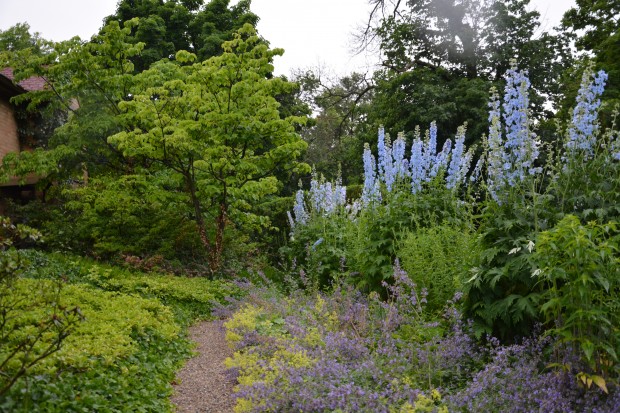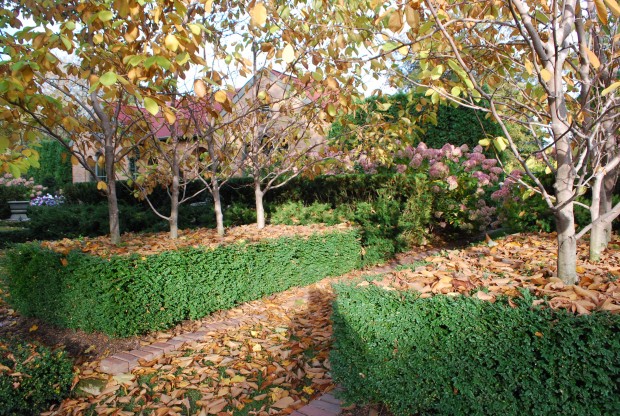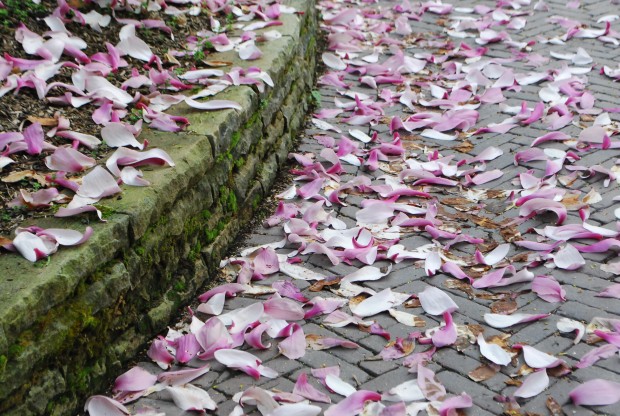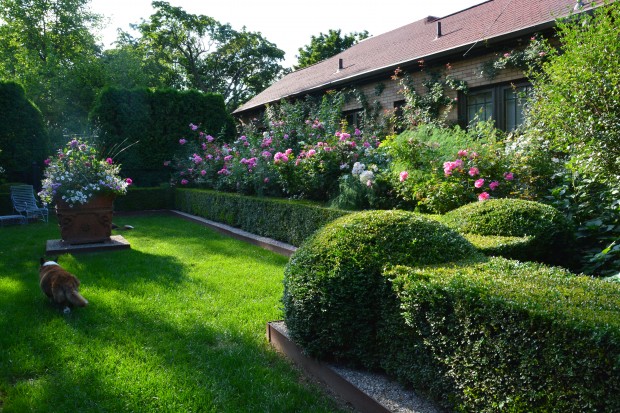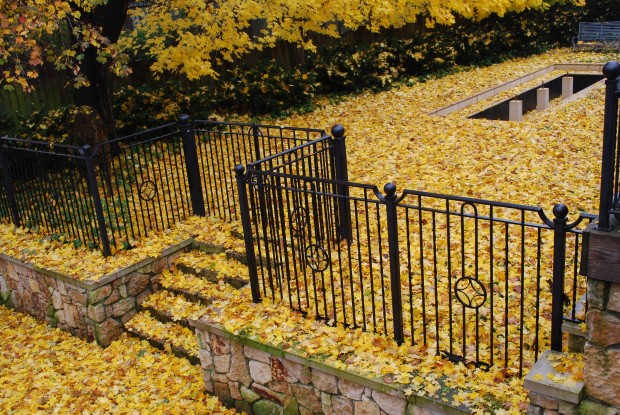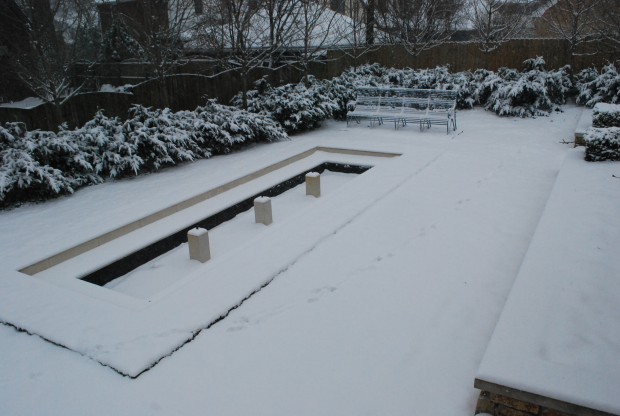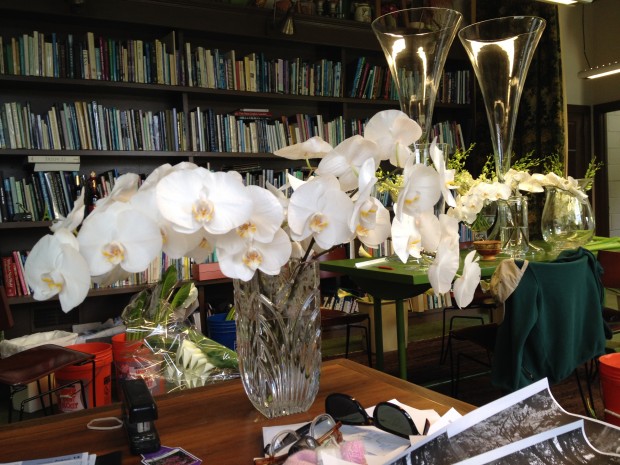 Don’t ask me for the particulars, but I do recall seeing a spot on television recently featuring lots of young people studying engineering. Engineering? It never seemed to me that a career in engineering was anything but sleepy-just one short step up from accounting. But these young people had solving the problems of the world on their mind. Their projects were as diverse as they were complicated. An artificial limb powered by nerve impulses, salt water desalinated for drinking. Housing simple enough to put up in just a few hours. I was impressed-enough to rethink my casual disdain. In fact, every project requires some engineering. A landscape design may require a grading plan, a drainage plan, a footing or a wall. It may require sleeves under a driveway, or lighting. It may require a flat plane of ground, or a slope that descends on a certain angle. Projects with the most modest of goals have than engineering phase. Cut flowers for an event of a certain scale and feel proved to need some careful engineering.
Don’t ask me for the particulars, but I do recall seeing a spot on television recently featuring lots of young people studying engineering. Engineering? It never seemed to me that a career in engineering was anything but sleepy-just one short step up from accounting. But these young people had solving the problems of the world on their mind. Their projects were as diverse as they were complicated. An artificial limb powered by nerve impulses, salt water desalinated for drinking. Housing simple enough to put up in just a few hours. I was impressed-enough to rethink my casual disdain. In fact, every project requires some engineering. A landscape design may require a grading plan, a drainage plan, a footing or a wall. It may require sleeves under a driveway, or lighting. It may require a flat plane of ground, or a slope that descends on a certain angle. Projects with the most modest of goals have than engineering phase. Cut flowers for an event of a certain scale and feel proved to need some careful engineering.
 Any cut flower arrangement 6 feet tall and as wide asks for some engineering in advance-yes. Add to this call the fact that the flowers in question were calla lilies. Arranging callas in a small vase is a challenge. Consider their requirements. Their thick fleshy stems resent water that is too deep. They are not a good choice for a long term arrangement. The juicy stems split, give way and go down long before the flowers. Heavy, long stemmed flowers have a mind of their own. What was my idea to arrange armloads of callas in the top of a glass vase sitting 48 inches off the floor? The opening of the vase was big – 18″ in diameter.
Any cut flower arrangement 6 feet tall and as wide asks for some engineering in advance-yes. Add to this call the fact that the flowers in question were calla lilies. Arranging callas in a small vase is a challenge. Consider their requirements. Their thick fleshy stems resent water that is too deep. They are not a good choice for a long term arrangement. The juicy stems split, give way and go down long before the flowers. Heavy, long stemmed flowers have a mind of their own. What was my idea to arrange armloads of callas in the top of a glass vase sitting 48 inches off the floor? The opening of the vase was big – 18″ in diameter.
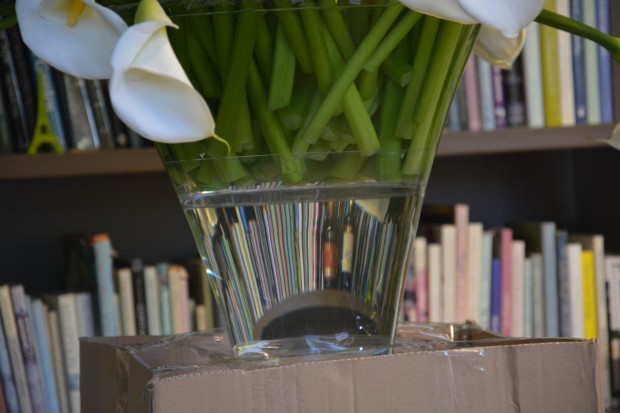 I have Sunne to thank for this engineering idea. The long time manager and special events coordinator for Mary’s Enchanted Garden in downtown Detroit, she brought years of experience in the floral industry with her when she came our way. A clear plastic saucer of just the right diameter was placed into the vase full of water, and wedged level and tight. This sounds simple, but it took a number of tries before Rob got it right. The calla lilies would have the shallow water they prefer.
I have Sunne to thank for this engineering idea. The long time manager and special events coordinator for Mary’s Enchanted Garden in downtown Detroit, she brought years of experience in the floral industry with her when she came our way. A clear plastic saucer of just the right diameter was placed into the vase full of water, and wedged level and tight. This sounds simple, but it took a number of tries before Rob got it right. The calla lilies would have the shallow water they prefer.
 What came next was more about construction than arranging. Each stem was placed with the idea of creating a structure that would be stable and self supporting. After all, this event was not to take place in my office. This would need to be transported, and transported without a hitch. Callas have a naturally curving stem. The early stems were placed with the natural curve down, so the faces of the callas were turned up. Calla stems can be straightened with repeated pulling all along the length of the stem, but that takes a very skilled pair of hands that exerts just the right amount of pressure.
What came next was more about construction than arranging. Each stem was placed with the idea of creating a structure that would be stable and self supporting. After all, this event was not to take place in my office. This would need to be transported, and transported without a hitch. Callas have a naturally curving stem. The early stems were placed with the natural curve down, so the faces of the callas were turned up. Calla stems can be straightened with repeated pulling all along the length of the stem, but that takes a very skilled pair of hands that exerts just the right amount of pressure.
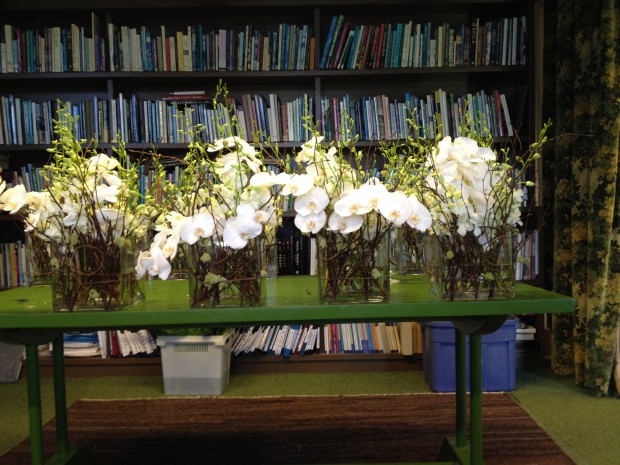 Other arrangements included white phalaenopsis, green cymbidiums and white dendrobiums. All of these flowers are orchids. The flowers of the white moth orchids are exceptionally delicate, and come packed in white shredded tissue. Each curving stem may have 6 or 8 flowers. These stems were supported by a series of birch twigs, placed inside and outside the vases.
Other arrangements included white phalaenopsis, green cymbidiums and white dendrobiums. All of these flowers are orchids. The flowers of the white moth orchids are exceptionally delicate, and come packed in white shredded tissue. Each curving stem may have 6 or 8 flowers. These stems were supported by a series of birch twigs, placed inside and outside the vases.
 The twigs provided structure and support to the orchid stems. Their dark vertical shapes are in stark contrast to the curves of the flowers. Bark covered twine and moss completed the look. Next up, engineering the transport.
The twigs provided structure and support to the orchid stems. Their dark vertical shapes are in stark contrast to the curves of the flowers. Bark covered twine and moss completed the look. Next up, engineering the transport.
 A platform dolly is a huge amount of help, but in the end, there is no substitute for the human hand. We had stuffed the box that held the calla vase with bubble wrap, but there would be a lot more to do before this arrangement would be road ready. The weight of the water in the vase was considerable, but the weight of the callas made the entire affair extremely top heavy. There were a lot of skilled hands on deck for this part.
A platform dolly is a huge amount of help, but in the end, there is no substitute for the human hand. We had stuffed the box that held the calla vase with bubble wrap, but there would be a lot more to do before this arrangement would be road ready. The weight of the water in the vase was considerable, but the weight of the callas made the entire affair extremely top heavy. There were a lot of skilled hands on deck for this part.
 As I expected, water sloshed out of the top of the vase getting it from my office to the lift gate of the truck, but it wasn’t much. Much to my relief, the callas looked serenely indifferent to all of the bumps getting through the shop to the truck. Phase 2 of the engineering was about to get started.
As I expected, water sloshed out of the top of the vase getting it from my office to the lift gate of the truck, but it wasn’t much. Much to my relief, the callas looked serenely indifferent to all of the bumps getting through the shop to the truck. Phase 2 of the engineering was about to get started.
 The time it took to remove the box from the vase, screw 2 by 4’s over the blanket-wrapped foot of the vase, wrap the upper portion of the vase in bubble wrap, and secure the arrangement to the walls of the truck with straps was a considerable amount of time.
The time it took to remove the box from the vase, screw 2 by 4’s over the blanket-wrapped foot of the vase, wrap the upper portion of the vase in bubble wrap, and secure the arrangement to the walls of the truck with straps was a considerable amount of time.
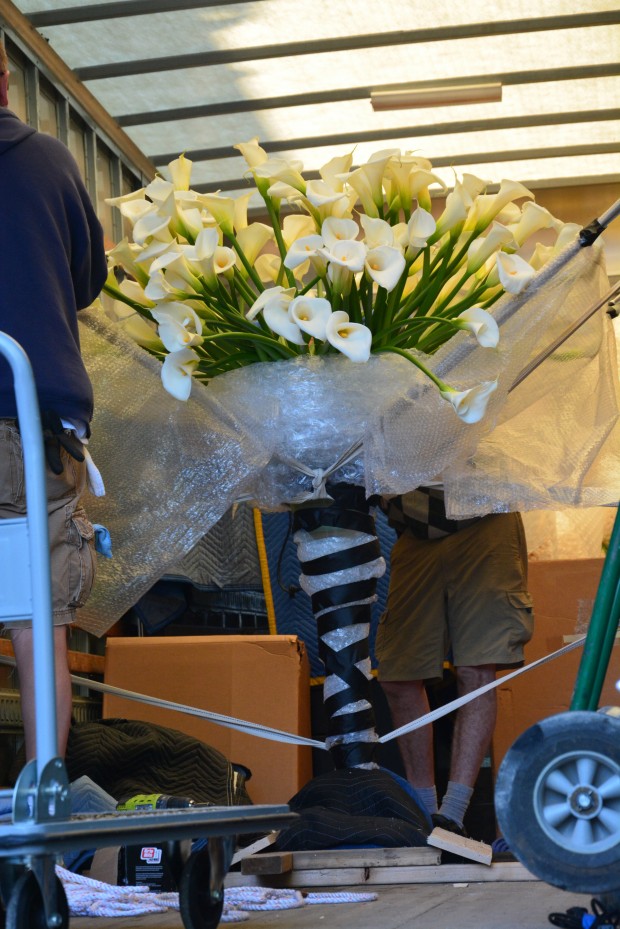 The juncture of the vase to the foot was very small, and vulnerable. Great care was taken to protect it. Fine textured bubble wrap insulated the flowers from the straps. All the engineering here was geared towards making sure the arrangement would not move in the truck.
The juncture of the vase to the foot was very small, and vulnerable. Great care was taken to protect it. Fine textured bubble wrap insulated the flowers from the straps. All the engineering here was geared towards making sure the arrangement would not move in the truck.
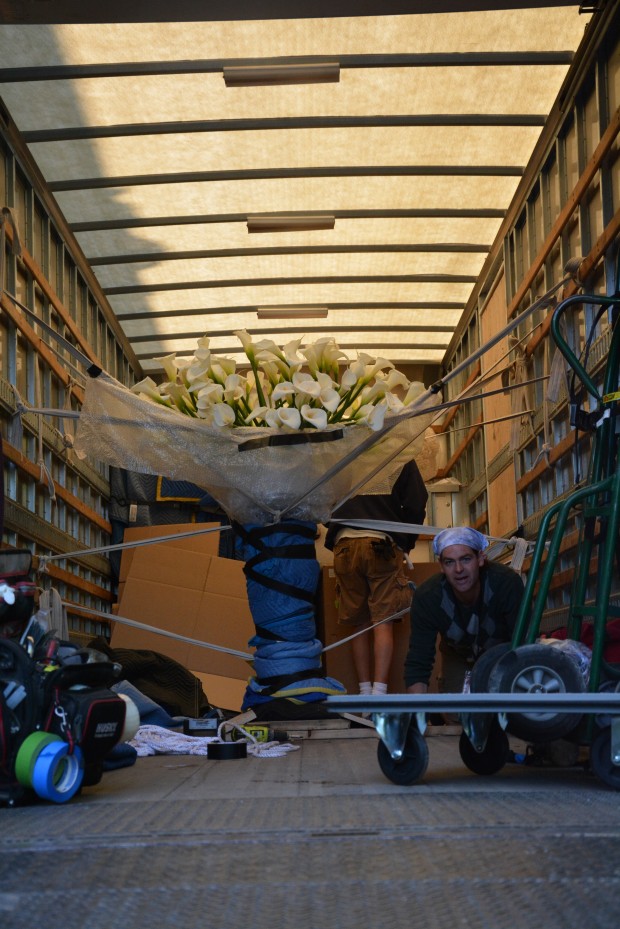 The big vase was finally ready to transport. I was sure the vase would ride up and down in tandem with the truck. That said, I was glad it would not be me driving.
The big vase was finally ready to transport. I was sure the vase would ride up and down in tandem with the truck. That said, I was glad it would not be me driving.
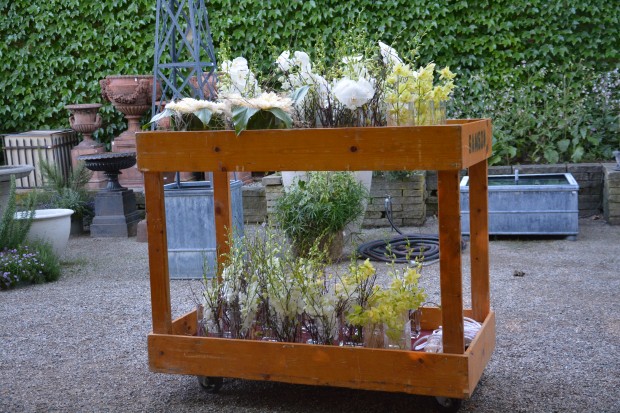 All of the smaller arrangements would ride on a two tiered padded cart. Just before loading, every empty crevice was stuffed with bubble wrap. The cart would be strapped to the wall of the truck. It should be clear that the engineering involved in this project was the most important element.
All of the smaller arrangements would ride on a two tiered padded cart. Just before loading, every empty crevice was stuffed with bubble wrap. The cart would be strapped to the wall of the truck. It should be clear that the engineering involved in this project was the most important element.
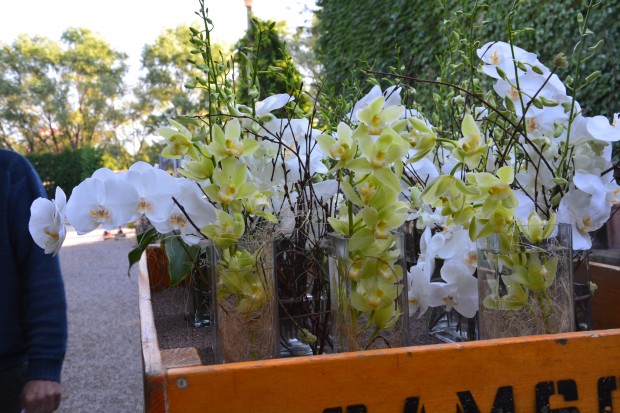 I am happy to report that all the flowers got to their destination safely.
I am happy to report that all the flowers got to their destination safely.
 The time and thought that goes into the engineering of any project is time well spent.
The time and thought that goes into the engineering of any project is time well spent.

